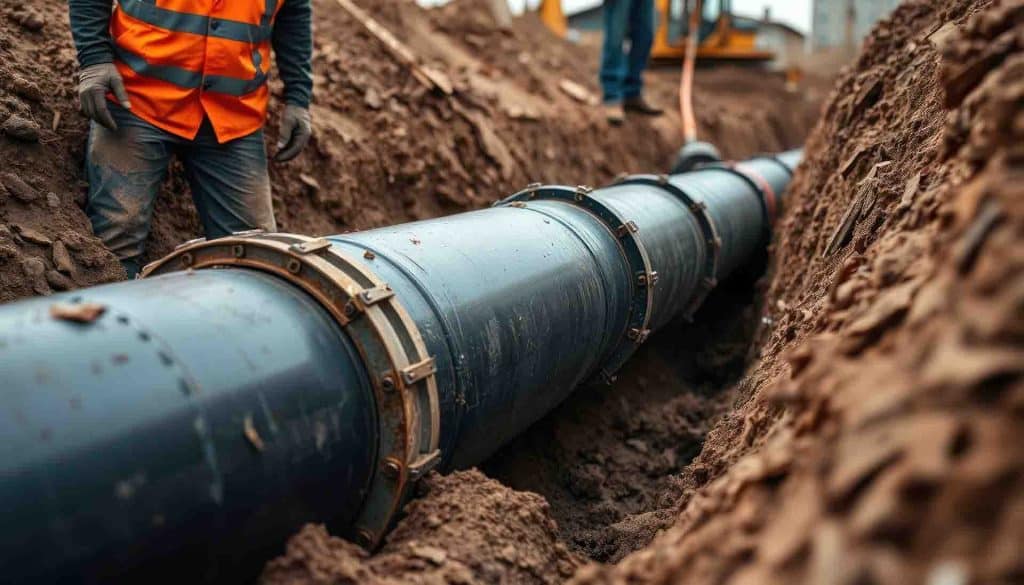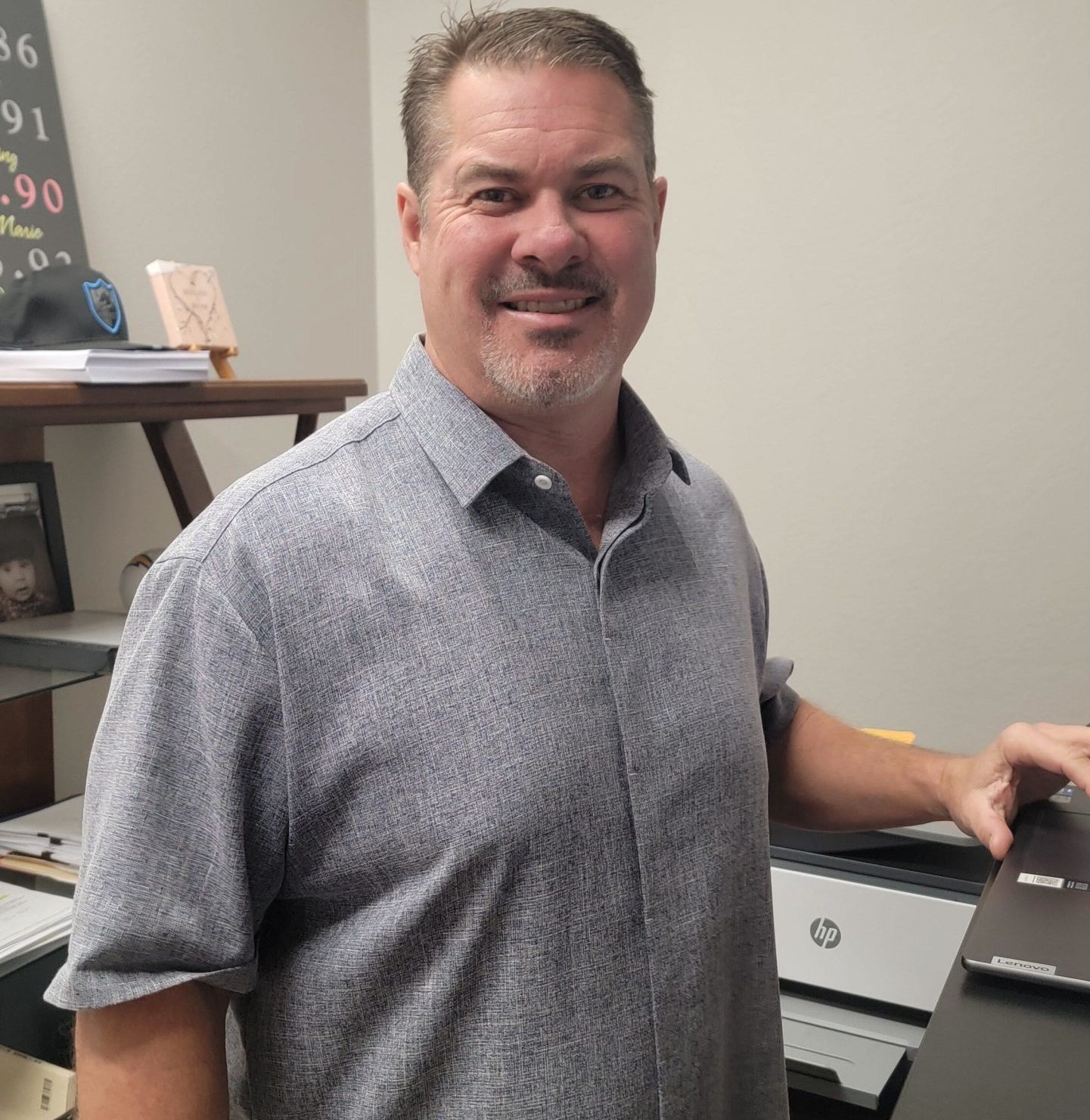
Which Sewer Repair Works Best? Pipe Lining vs. Pipe Bursting
So, your sewer line’s acting up - cracked, leaking, or maybe just plain done!
Do you consider replacing the whole thing or repairing it from the inside out? That’s where the debate among homeowners begins - Pipe Bursting or Pipe Lining?
Well, both are trenchless and won’t turn your garden into a war zone. But the difference lies in the fact that they are built for different situations, and choosing the wrong one can mean wasted money or, worse, a repeated repair.
Pipe bursting breaks and replaces the old pipes entirely, while pipe lining creates a new one inside the existing structure. It definitely sounds simple, but the details matter!
And… contacting professional plumbers can help you make the right decision. We’ve created this comprehensive guide to help you understand which one’s better for your damaged sewer line. Keep reading!
| Need emergency plumbing? Our 24/7 service is just a call away - Reach out now! |
Types Of Sewer Line Damage
Some of the major sewer line damages are as follows -
1. Cracks And Fractures
Cracks often develop due to ground movement, freezing temperatures, or aging materials. These allow wastewater to leak and tree roots or soil to infiltrate. It can damage the pipes and may also lead to bursting.
2. Pipe Collapse
When the pipes undergo extreme external pressure or have aged, they can collapse. A collapsed sewer line halts wastewater flow entirely and requires excavation or pipe bursting for a complete replacement.
3. Corrosion And Rust
Metal pipes, especially those made of cast iron, are prone to deterioration due to prolonged exposure to moisture and sewage gases. This leads to thinning walls, leaks, and eventual pipe failure, especially in older plumbing systems.
4. Tree Root Intrusion
Roots seek moisture and infiltrate even the smallest cracks in pipes. Over time, they expand inside the sewer line, causing blockages, structural stress, and eventually, pipe fractures or collapses completely.
5. Pipe Misalignment
When the soil shifts, it can cause the sections of the pipe to separate or become misaligned. This disrupts the flow, traps debris, and increases the risk of blockages, leaks, etc.
What Is Pipe Bursting, And Is It Best For Your Damaged Sewer Line?
Pipe bursting is a trenchless method where your existing sewer pipe - yes, the one that’s collapsed, given up, or cracked - is broken apart underground and replaced with a new, high-density polyethylene (HDPE) pipe.
If your plumber says your pipe is beyond repair, why not start fresh underground? The best part is that it does not wreck your lawn.
When To Use Pipe Bursting?
- Pipes that are damaged by aggressive tree roots
- Severely collapsed or crushed pipes
- If you need to upsize your pipes
Plumbers advise using pipe bursting for rural properties and large outdoor spaces. Also, the process works best if it does not include widening the pipes.
Additionally, you must be particularly cautious to ensure that there are no conflicting utility lines nearby, including those that have not been charted for a long time. Plus, ensure that the pipes are buried deep enough to avoid surface disruption during the bursting action.
How Does It Work?
- Plumbers start by digging access pits at both ends of the pipe. This is fast and minimal compared to a full trench.
- A bursting head is pulled through, attached to a strong cable and a new pipe. It fractures the old pipes outwards into the surrounding soil and clears the path. Wondering if it affects nearby landscaping? It usually doesn’t, but roots and rocks can complicate things.
- The new pipe (usually made up of HDPE) is slid behind the bursting head. These pipes can tolerate corrosion, leaks, root attacks, and whatnot! Wondering about its durability? The pipe’s lifespan is 50+ years.
- The pipes are connected and inspected to ensure everything fits in and flows properly. The system is pressure-tested, sealed, and ready to handle your household waste.
Limitations
- Needs access at both pipe ends. Is your lawn spacious enough?
- May cause unintended damage to nearby infrastructure
- Not an ideal solution for a heavily landscaped area
- Unstable or shifting ground might prevent the use
- It may damage gas, water, or electrical lines
- Usually costs more than lining up upfront
- Rocks and dense roots may slow the job
- It is not allowed in several jurisdictions
Pipe bursting is an ideal solution, as it can help you fix a few specific problems, such as a buried leaky pipe or pipes that are corroded or badly rusted.
When Not To Use Pipe Bursting?
It is advisable not to use the pipe bursting method for your damaged sewer line if -
- The pipe is narrow
- Close to the utility lines
In many jurisdictions, pipe bursting is not legal, as there may be generations of utility lines that have been laid. Hence, bursting can disrupt more than just the dirt and pavement.
| Is DIY not working? Let the experts handle your Plumbing issues - Contact Us! |
What Is Pipe Lining, And Is It Better For Your Damaged Sewer Line?
Pipe lining, also known as Cured-In-Place Pipe (CIPP), is a trenchless repair method. In this method, plumbers use a flexible, resin-soaked liner that is inserted into your existing damaged sewer line and cured to form a new pipe within the old one.
If the pipe is leaking, cracked, or corroded but still holding its shape, plumbers often recommend pipe lining as a minimally invasive fix. No digging required, no trenches needed - all you need is one access point and a liner that sets strongly.
When To Use Pipe Lining?
- Corroded cast iron pipes
- Pipes with minor cracks or pinhole leaks
- Situations where excavation would be too disruptive
- Repairs in urban areas or under foundations, driveways, or landscaping
Pipe lining is mainly used for tight urban spaces, older homes with delicate landscapes, and pipes with retained shapes. If your pipe is leaking but still round and stable, lining is still considerably the best. It is also to be noted that the pipe in question must be greater than 2 inches in diameter.
This method is ideal if the pipes run under concrete slabs or patios, where digging would mean a costly mess. Additionally, the pipe lining works well in historic districts, where digging may be restricted or simply not worth the hassle.
How Does It Work?
- Plumbers usually begin the process by inspecting the sewer line with a camera. If the structure is good to go, they move forward with it.
- The damaged pipe is cleaned with high-pressure jetting to remove buildup, roots, or debris. It basically powerwashes your underground plumbing.
- Next, the fiberglass liner coated with epoxy resin is inserted and inflated. The liner conforms to the interior of the pipe and is left to cure in place. Curious about curing time? Well, it depends, but usually a few hours.
- Once cured, the new pipe becomes seamless, jointless, and resistant to corrosion and intrusion. Final checks and flow tests ensure your line is ready to go, with no digging, of course!
Limitations
- Doesn't allow upsizing
- Not suitable for fully collapsed pipes
- Cannot fix misaligned or sagging pipes
- Cold or wet conditions may delay curing
- Epoxy fumes may require proper ventilation
- Slightly reduces the pipe’s internal diameter
- Not ideal if the pipes have multiple bends or offsets
- Cost may be high if extensive cleaning is required
Professional Plumbers often suggest pipe lining for homes where the damage is inside the pipes, not outside them. It is the best option to fix what’s broken without replacing it.
When Not To Use Pipe Lining?
Pipe lining is generally not the right solution if the sewer pipe has collapsed, flattened, or lost its original shape. It also won’t work if there’s a major misalignment between the pipe joints or if the existing pipe needs to be upsized to improve flow.
Additionally, pipes with extreme bends or complex angles can make the liner difficult to insert or cure. In some cases, sewer lines may not qualify for lining simply due to their layout or extent of internal damage.
Hence, you need to hire plumbers to assess the area properly using a camera to determine if your yard or lawn qualifies for it.
Read More About:
- Toilet Clog or Sewer Line Issue? Here’s How to Know for Sure
- How to Fix a Clogged Dishwasher and Avoid Future Issues
- 8 Plumbing Tools Every Homeowner Should Invest In
- Warning Signs Your Home’s Water Quality Needs Testing
Takeaway
Choosing the solution isn’t about which one’s better. It should always be about what the situation or damage requires.
If the pipe is collapsed or crushed, bursting is your fix. If it’s stable but leaking or corroded, lining might be the cleaner option. Decide based on the condition of the pipe, not on assumptions.
| Areas We Serve | ||
|---|---|---|
| Plumbers In Sacramento, CA | Plumbers In San Jose, CA | Plumbers In Oakland, CA |
| Plumbers In Carmiachel, CA | Plumbers In Rocklin, CA | Plumbers in Modesto, CA |
Consult With Professional Plumbers In Stockton At Preferred Plumbing And Drain!
If you live in Stockton and need help with your pipe, Preferred Plumbing and Drain would be delighted to help. With over 35 years of overall industrial experience and 19 years in business, we strive to serve our community with pride. Our exceptional customer service, upfront pricing, convenient appointments, and 24/7 availability make us the best.
Our plumbing services in Stockton cover everything you need, from trenchless pipe repair and replacement to emergency sewer line diagnostics. Whether you’re facing stubborn clogs, leaky or damaged pipes, or simply need a second opinion, we’re here to help you.
Reach out to us anytime at 800-414-0340 - your sewer line is in good hands.

Bryan Graves has been in the plumbing and drain cleaning industry since 1989, starting as a service technician. He served as Vice President to the CEO until 2006, which is when he started his own business, Preferred Plumbing & Drain. For the past 19 years, he has kept a 97% customer satisfaction rating by making sure every customer of Preferred Plumbing & Drain is happy enough to recommend us to others. When Bryan is not working, he enjoys spending time with his family, going boating, and watching sports.


 Request a Service
Request a Service